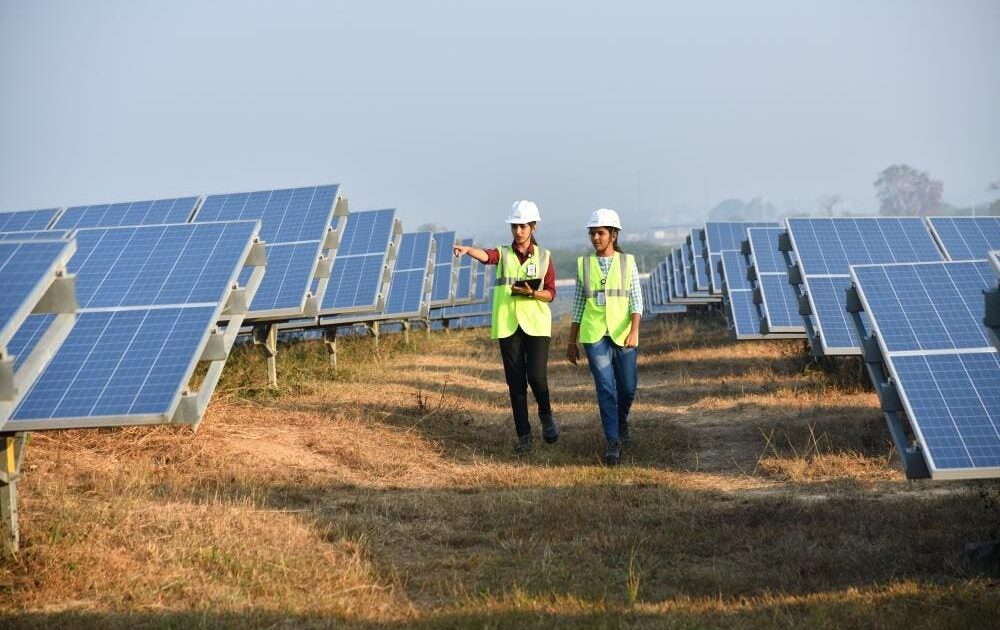Reimagining ESG For Emerging Market Realities

As business leaders learn to deal with the growing risks associated with climate change, Environmental, Social, and Governance (ESG) frameworks have become essential tools for building resilient, responsible, and future-ready businesses.
Before ESG frameworks were established for businesses, sustainability was often treated as a “checkbox exercise,” driven more by optics than impact. ESG compliance, shaped by global frameworks, ratings, and mandatory disclosure, has since transformed this, ensuring businesses address sustainability beyond surface level. And now, what once began as voluntary reporting is quickly becoming a regulatory imperative and essential to maintain corporate relevance.
This shift has been aided enormously by the realisation that ESG isn’t just good for the planet; it can also drive financial performance and strengthen resilience. A Deloitte study found that higher ESG scores correlate with higher valuation multipliers, and improvements in ESG scores over time result in up to a 1.8x increase in EV/EBITDA. Similarly, a 2023 study from McKinsey showed that a better ESG score can reduce a company’s cost of capital by up to 10%.
In today’s era of globalisation, ESG standards are viewed as universally applicable mechanisms for transitioning towards a cleaner and more equitable global economy. There are a variety of international frameworks that companies often report to – including the Global Reporting Initiative (GRI), the Sustainability Accounting Standards Board (SASB), and the International Sustainability Standards Board (ISSB) – to assess, measure, and report their ESG performance.
But, despite the progress made, in most cases, ESG standards and reporting aren’t leading to businesses embedding sustainability into their long-term strategies in the way they should. According to PwC, 78% of CEOs globally say their companies are committed to innovating greener products, services or technologies. However, only 21% of CFOs report progress toward fully integrating ESG into business strategy. This reveals a clear misalignment between business leaders’ ambitions and operational execution.
Some of the developed economies that were once leading the charge on ESG are also now falling behind. This is particularly pronounced in the US, framing ESG practices as barriers to economic growth. There, mentions of ESG in financial reports fell by 60% over the past year. But while US businesses focus instead on navigating the evolving regulatory environments to maintain resilience, this short-term approach is damaging their long-term stability, further creating ripple effects on global systems.
While the absence of the world’s largest economy could have meant the perfect excuse to slow down, the opposite has unfolded, with developing countries stepping up and the Global South leaning forward. Despite the hurdles of financial constraints, limited awareness, and scarce resources, they have chosen to innovate, partner, and push boundaries. This creates a disconnect between global ESG expectations and the realities of growing responsible businesses in the Global South.
For instance, while the EU is currently enforcing strict ESG reporting standards on developing nations that are in line with Western business practices, countries such as Bangladesh face up to a 30% drop in exports to the bloc if they fail to comply. Yet, this ignores that there is a rapid adoption of ESG practices among Bangladeshi businesses. To take just one example, DBL Group, one of the country’s leading textile manufacturers, has attracted significant international investments driven by the company’s strong commitment to ESG, including innovative practices like 3D virtual sampling to reduce waste and advanced wastewater reuse systems, and social impact initiatives focused on skills development and women’s empowerment. These examples underscore the need for a more nuanced and holistic approach to ESG standards – one that recognises the progress being made locally, and allows for flexible implementation that aligns with national development priorities.
India, now the world’s fourth-largest economy, has not only stepped up but has positioned itself as a template for climate leadership from the Global South, providing another compelling example of contextual ESG integration. The country’s ESG journey is rapidly evolving, shifting from reactive compliance to proactive integration. With over 228 GW of non-fossil fuel capacity already installed, the country is simultaneously reducing its carbon footprint while expanding access to clean electricity for millions of households, many of which previously lacked reliable energy. The bold ambition of achieving 500 GW of non-fossil fuel energy by 2030 is now both a climate goal and a development imperative to power the economy.
Government initiatives like the National Green Hydrogen Mission, alongside tax incentives and regulatory alignment by SEBI, are reshaping the landscape to embed the clean energy transition into India’s growth. Another crucial layer to India’s leadership is its focus on “Aatmanirbharta” – through its PLI schemes, India is not only embedding manufacturing at the heart of its strategy but reshaping global clean-tech supply chains. To add, recent budgetary investments in clean tech and sustainable finance have reinforced this momentum. With these measures, Indian businesses are increasingly being equipped with practical tools that enable them to embed ESG into their core strategies, helping them to drive decarbonisation while building long-term value.
The Business Responsibility and Sustainability Reporting (BRSR) mandate rolled out by SEBI is a perfect example, a turning point in India’s corporate reporting landscape, with the top 1000 listed companies required to publish their ESG performance, shaping the narrative from “nice to do” to “must have”. The BRSR is not only aligned with globally accepted frameworks like the GRI and TCFD, but is focused on creating impact outside the walls of one’s organisation, diving into supply chains. In 2023, despite Scope 3 being a voluntary disclosure, 51% of India’s top 100 listed companies reported their Scope 3 data. By 2025, more than 1,200 companies had published BRSR, going beyond the top 1,000 mandate — a clear signal that reporting is now seen as an enabler of long-term value creation, moving from “compliance” to “context.”
Today, ESG is not about what you report, but what you build, a tool for more action than ambition. As ESG continues to evolve from a voluntary initiative to a regulatory imperative, a rigid, one-size-fits-all model risks sidelining progress in emerging markets and widening the development gap. Instead, emerging economies need to develop contextual ESG models that reflect the local realities they operate in, aligning with national goals. India’s journey, a combination of reverse auctions, EV policies, and digital platforms, while ensuring inclusive job creation, is a perfect example of context-driven ESG, delivering transformation at speed and scale, showcasing development and decarbonization simultaneously.

